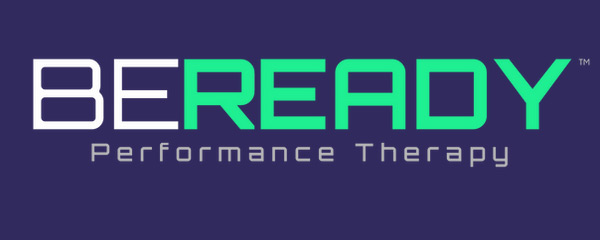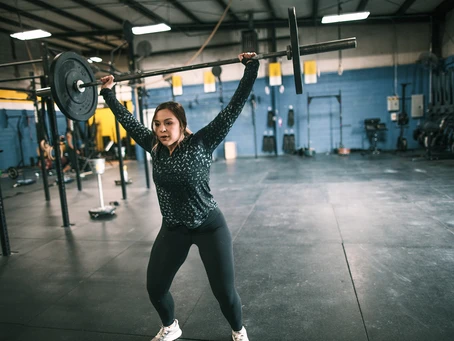Return from Quarantine
Exercise Guidelines
Read Time: 5-7 Minutes
Many of us are eager to get back in the gym and crush some workouts more intensely than home exercise has allowed. All the work we put into maintaining fitness at home will surely be a better foundation to move forward from than if we hadn’t put in that effort. We now want to make sure that we progress with long-term goals in mind.
To ensure we minimize risk for injury, and maximize our ability to reach goals of strength, endurance, weight-management, and health, the following guidelines are recommended:
A. Remember how it felt when you first started CrossFit/Fitness. Going up the stairs or sitting down on the toilet was likely a problem at some point in those first few weeks. No, we aren’t saying you’re back to ground zero after quarantine. Just be kind to yourself the first 3 to 4 weeks back.
B. Consider the difference between tendon-intensive movements and non- tendon intensive movements. Tendons are what connect muscle to bone. When you have on ongoing achy-pain from exercise, it’s usually a tendon. All movements use tendons, but movements that are heavily loaded and require a greater range of motion are more tendon-intensive. We want to protect tendons to avoid new chronic pains.
Tendon-Intensive movements include:
1. Kipping Pull-Up/Muscle-Up
2. Olympic Lifts (Snatch, Clean, Jerk, and Variations) 3. Dips
4. Landing from Jumping
5. Bench Press
6. Handstand Push-Ups
7. Back Squat/Front Squat
8. Chest Fly
With these tendon-intensive movements, we want to emphasize SMALL SETS at first (think 50% of your previous volume). You may have the capacity to do 15 unbroken kipping pull-ups right now and not feel immediate pain, but that doesn’t mean you should. We must look at our capacity for exercise not only in one workout, but also capacity over the course of a few weeks.
C. Work back up to heavy over several weeks. You likely haven’t been lifting at very high percentages of your max lifts. In 6-8 weeks you’ve probably lost some muscle mass. More importantly, what you have lost is a habit of high-power muscle recruitment. This means your central nervous system is not as accustomed to bracing your body for heavy lifts at similar percentages right now. We need to give your central nervous system (brain/spinal cord/nerves) a chance to catch up and get back in the rhythm of lifting in order to avoid lifting injury.
D. THE MAIN GUIDELINE IS THIS: Use RPE. For tendon-intensive or heavy movements, we will utilize the RPE (Rate of Perceived Exertion) Scale. Basically putting in effort on a scale of 1 to 10.
NOTE: RPE is not the same as percentages of 1 rep maxes. 80% 1RM ≠ 8/10 RPE.
WEEK 1: 4-5/10 RPE on Tendon-Intensive/Heavy lifts.
WEEK 2: 6-7/10 RPE on Tendon-Intensive/Heavy lifts.
WEEK 3: 8/10 RPE on Tendon-Intensive/Heavy lifts.
WEEK 4: 8-9/10 RPE on Tendon-Intensive/Heavy lifts (if desired).
Only progress RPE week to week if fully recovered and painless from the week before.
Note: The weeks above are not general weeks. They are for any given movement. For instance, you may not encounter a bench press until your 3rd week back in the gym, but you will want to treat this movement with week 1 guidelines.
RPE Scale
0 – Rest
1 – Really Easy
2 – Easy
3 – Moderate
4 – Sort of Hard
5 – Hard
6 – Hard
7 – Really Hard
8 – Really Hard
9 – Really Really Hard
10 – Competition
- How well you use this scale is a measure of your own maturity. In the first few weeks, you may be feeling good mid-workout and feel the desire to turn on the jets above what’s recommended. Just don’t. Not if you have long-term goals in mind.
- Be sure to perform a thorough personal warm-up AND cool down. 10-15 minutes is recommended.
GOAL: The first 3 weeks are all about moving well, adapting, and having fun around the gym community.
In summary:
- Remember how it felt when you first started CrossFit/Fitness.
- Consider the difference between tendon-intensive movements and non- tendon intensive movements.
- Work back up to heavy over several weeks.
- THE MAIN GUIDELINE IS THIS: Use RPE.
- How well you use this scale is a measure of your own maturity.
- Be sure to perform a thorough personal warm-up AND cool down.
If you have any questions, feel free to reach out to:
Ross Gentry PT, DPT, CF-L2, CSCS
Email: ross@bereadypt.com
Text/Call: 901-463-0550



